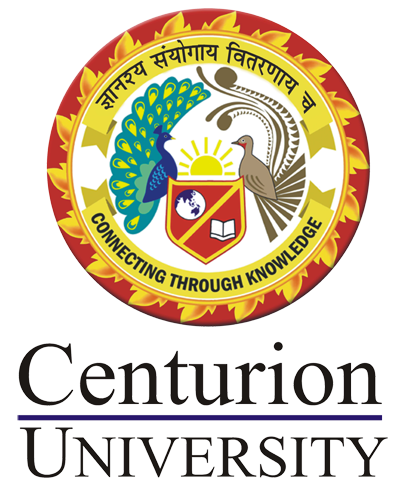SESSION PLAN :
Session 1 : Setting up of PACU- Definition of PACU
PPT link : PACU MOD -1 Setting up of PACU
Video link :
Session 2 : Set up Staff/patient ratio, Monitoring in PACU,
PPT link : PACU MOD -1 Setting up of PACU
Video link :
Session 3 : Admission and discharge criteria
PPT link : PACU MOD -1 Setting up of PACU
Video link :
Session 4 : Criteria for Shifting into PACU
PPT link : PACU MOD -1 Setting up of PACU
Video link :
Session 5 : Aldred score
PPT link : PACU MOD -1 Setting up of PACU
Video link :
Session 6 : Discharge criteria and Fast tracking
PPT link : PACU MOD -1 Setting up of PACU
Video link :
Session 7 : Post Operative Complications And Its Management
PPT link : PACU MOD -2 Post operative complications and its management
Video link :
Session 8 : Airway obstruction,
PPT link : PACU MOD -2 Post operative complications and its management
Video link :
Session 9 : Desideration
PPT link : PACU MOD -2 Post operative complications and its management
Video link :
Session 10 : Bronchospasm,
PPT link : PACU MOD -2 Post operative complications and its management
Video link :
Session 11 : Laryngospasm
PPT link : PACU MOD -2 Post operative complications and its management
Video link :
Session 12 : Unresponsiveness
PPT link : PACU MOD -2 Post operative complications and its management
Video link :
Session 13 : Neurological complications. - Coma, seizures,
PPT link : PACU MOD -2 Post operative complications and its management
Video link :
Session 14: CVA(stroke), cerebral hypoxia
PPT link : PACU MOD -2 Post operative complications and its management
Video link :
Session 15 : Pulmonary edema,
PPT link : PACU MOD -2 Post operative complications and its management
Video link :
Session 16 : Haemorrhage from the surgical site
PPT link : PACU MOD -2 Post operative complications and its management
Video link :
Session 17 : Vascular complications-. DVT, embolism,(thrombus, air, fat, amniotic)
PPT link : PACU MOD -2 Post operative complications and its management
Video link :
Session 18 : Trauma to teeth, Headache,
PPT link : PACU MOD -2 Post operative complications and its management
Video link :
Session 19 : Backache, Ocular complications -loss of vision
PPT link : PACU MOD -2 Post operative complications and its management
Video link :
Session 20 : Shock-Anaphylactic shock
PPT link : PACU MOD - 3 - SHOCK
Video link :
Session 21 : Hypovolemic shock
PPT link : PACU MOD - 3 - SHOCK
Video link :
Session 22 : Shock management
PPT link : PACU MOD - 3 - SHOCK
Video link :
Session 23 : hypoxia and its management.
PPT link : PACU MOD - 3 - SHOCK
Video link :
Session 24 : Different instruments used in Surgical Procedures
PPT link : PACU - MOD -4 Different instruments used in Surgical Procedures
Video link :
Session 25 : Gynecological/obstetric surgery
PPT link : PACU - MOD -4 Different instruments used in Surgical Procedures
Video link :
Session 26 : General surgeries Procedures
PPT link : PACU - MOD -4 Different instruments used in Surgical Procedures
Video link :
Session 27 : Urological surgery
PPT link : PACU - MOD -4 Different instruments used in Surgical Procedures
Video link :
Session 28 : Orthopedic surgery
PPT link : PACU - MOD -4 Different instruments used in Surgical Procedures
Video link :
Session 29 : Neurosurgery
PPT link : PACU - MOD -4 Different instruments used in Surgical Procedures
Video link :
Session 30 : Ophthalmic surgery
PPT link : PACU - MOD -4 Different instruments used in Surgical Procedures
Video link :
Session 31 : Otorhinolaryngologic and head and neck surgery (ENT)
PPT link : PACU - MOD -4 Different instruments used in Surgical Procedures
Video link :
Session 32 : Cardiac surgery
PPT link : PACU - MOD -4 Different instruments used in Surgical Procedures
Video link :
Session 33 : Post operative pain relief
PPT link : PACU - MOD -5 Post operative pain relief
Video link :
Session 34 : Management of postoperative pain- narcotics, NSAID(im/iv)
PPT link : PACU - MOD -5 Post operative pain relief
Video link :
Session 35: Local anesthetics through catheters
PPT link : PACU - MOD -5 Post operative pain relief
Video link :
Session 36 : Transdermal patches.
PPT link : PACU - MOD -5 Post operative pain relief
Video link :
Session 37 : Causes of mortality in PACU
PPT link : PACU - MOD - 6 Causes of mortality in PACU
Video link :
Session 38 : Mortality -myocardial infarction
PPT link : PACU - MOD - 6 Causes of mortality in PACU
Video link :
Session39 : Arrhythmias, hypoxia
PPT link : PACU - MOD - 6 Causes of mortality in PACU
Video link :
Session 40 : Electrolyte imbalance, Massive haemorrhage, embolism.
PPT link : PACU - MOD - 6 Causes of mortality in PACU
Video link :
Session 41 : Fluid Therapy * Fluid and electrolytes
PPT link : PACU - MOD -7 Fluid Therapy
Video link :
Session 42 : Blood and blood components
PPT link : PACU - MOD -7 Fluid Therapy
Video link :
Session 43 : Plasma , Allergies and reactions and its management
PPT link : PACU - MOD -7 Fluid Therapy
Video link :
Session 44 : Informed consent * Use of body tissue and organ transplant
PPT link : PACU - MOD -7 Fluid Therapy
Video link :
Session 45 : Records in OT , medico-legal cases
PPT link : PACU - MOD -7 Fluid Therapy
Video link :

